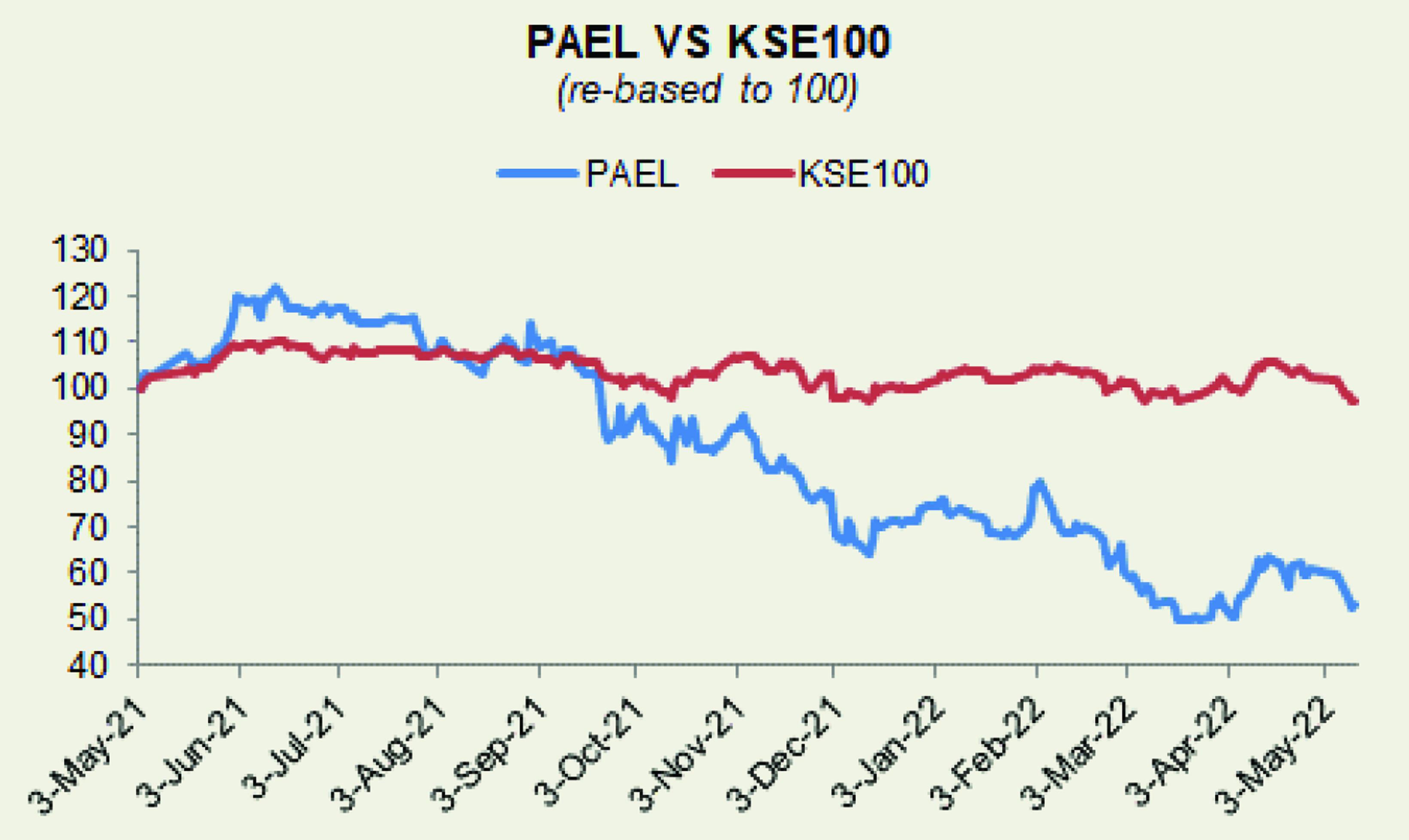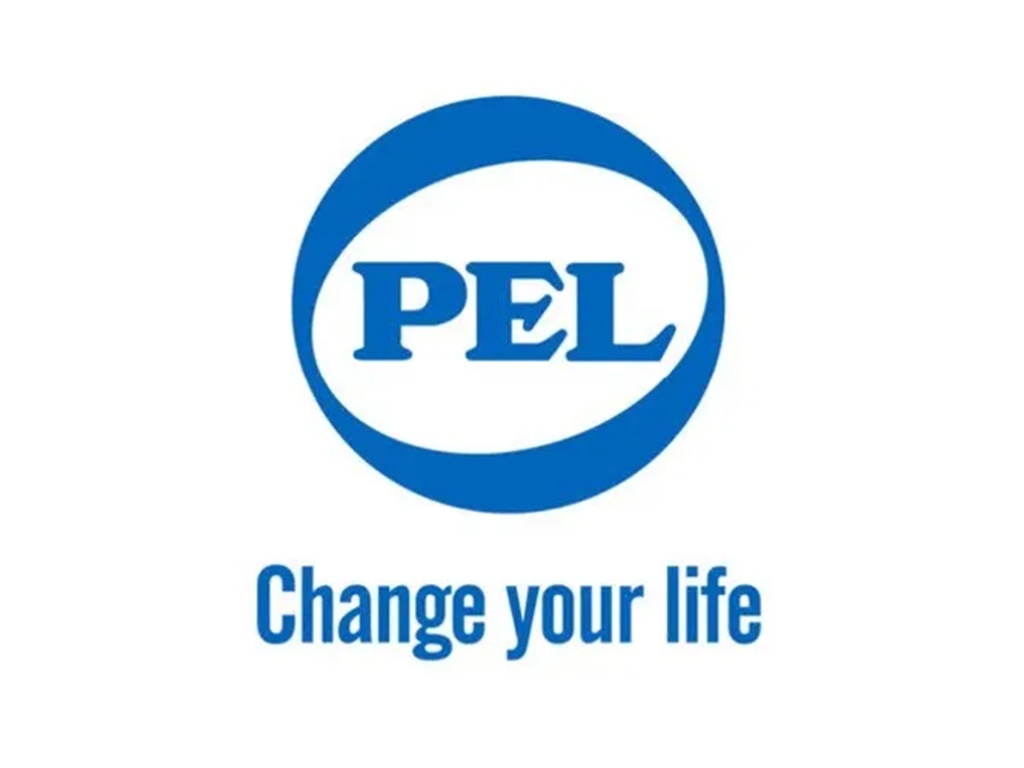Pak Elektron Limited (PSX: PAEL) was established “through a technical collaboration with AEG” in 1956 under the Companies Act, 1913 (now Companies Act, 2017). In 1978, the Saigol Group acquired PAEL and it was later made public. The company produces and sells electrical capital goods and domestic appliances. Its two main operating divisions are power division and appliances division.
Shareholding pattern

As at December 31, 2021, over 29 percent shares are held by the directors, CEO, their spouses and minor children. Within this category, a major shareholder is Mr. M. Naseem Saigol, the Chairman of Pak Elektron. Over 47 percent shares are with the general public, followed by 9 percent in insurance companies. The remaining about 14 percent shares is with the rest of the shareholder categories.
Historical operational performance
Pak Elektron has largely seen a growing topline except for CY13, CY18 and CY19. Profit margins, on the other hand, have been fluctuating, particularly in the last six years.

In CY18, topline contracted by over 10 percent to fall to Rs 23.5 billion compared to Rs 26 billion seen in the previous year. This was attributed to flat performance witnessed in the appliances division while the revenue from the power division fell by 20 percent. This, in turn, can be attributed to the inflationary pressure in the economy that had an adverse impact on disposable incomes, thus reducing spending on appliances. Combined with this was the increase in cost of production to over 88 percent, up from last year’s almost 85 percent that squeezed gross margins. In addition, the general elections of 2018 affected demand by the electric power distribution companies for electric equipment. Lastly, currency devaluation and the rise in interest rates also raised finance expense, thus reducing net margin to 2.25 percent, down from last year’s 5.3 percent.

Revenue contracted in CY19 by nearly 5 percent to reach Rs 22.3 billion. Volumes in the appliance division saw a marginal improvement of Rs 511 million; increase in revenue from this division was also marginal. On the other hand, sales from the power division reduced by 16 percent. However, the company invested in setting up a power transformer facility in anticipation of future growth. Cost of production improved to 85 percent of revenue, allowing gross margin to improve to almost 15 percent. Despite this, net margin fell to below 1 percent for the year as distribution expense consumed a larger share in revenue due to freight and forwarding and warranty period services, while finance expense escalated due to greater short-term borrowings.

In CY20, the company’s wholly-owned subsidiary, PEL Marketing Private Limited was amalgamated into Pak Elektron Limited with effect from April 30, 2020. CY20 results show results after the amalgamation and are therefore not comparable to CY19 results. Nevertheless, topline in CY20 grew by nearly 29 percent to reach close to Rs 29 billion. During the period, another power transformer manufacturing facility commenced commercial production. On the other hand, the appliance division saw a 9.7 percent reduction in volumes due to the effect of Covid-19 pandemic. The power division, however, saw a revenue growth of 31 percent as it resumed soon after lockdowns were eased. The overall higher revenue reflected in gross margin that peaked at over 22 percent. But this did not trickle down to the net margin that remained flat at less than 1 percent due to inflationary pressures, high interest rates, currency depreciation and increases in prices of petroleum products.
In CY21, the company posted the highest growth in revenue at nearly 49 percent to reach close to Rs 43 billion. The power division saw an increase in revenue by 62 percent while the appliance division also saw increase in revenue, by over 37 percent. This was attributed to normalcy in economic activities a year after the first outbreak of the Covid-19 pandemic. As a result, electricity consumption also increased. However, this was combined with a marginal incline in costs that reduced gross margin to 21 percent. But net margin improved year on year to 3.7 percent as operating expenses and finance expense consumed a relatively smaller share in revenue. Bottomline stood at a five-year of Rs 1.6 billion.
Quarterly results and future outlook
Revenue in the first quarter of CY22 was higher by 28 percent year on year. While the appliance division witnessed a marginal growth of less than 1 percent, the power division saw substantial increase in revenue by almost 77 percent. This was attributed to “smooth ordering from WAPDA power utilities and timely supply by company”. However, year on year profitability was marginally lower at a net margin of 2.4 percent compared to 2.9 percent due to rise in input costs as a result of inflationary pressures and global commodity price pressures. The company also relies on imports for its raw material, therefore it also affected by volatility in exchange rates.

Challenges such as rise in input prices and supply disruptions continue to exist but there are also factors that can positively impact future business performance such as some political stability, activities on the CPEC front, FDI inflows and growing demand.



























Comments
Comments are closed.